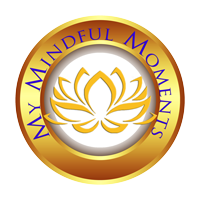Although you may not think so at first, company culture or environment and conflict resolution styles are intertwined within an organization or business. Depending on your company culture, you may choose to handle conflict in different ways. In this article, you’ll learn about the five different categories of conflict resolution and how different company cultures may benefit (or not) from each one of these resolution types.
According to the Thomas-Kilmann Conflict Mode Instrument model of assessing conflict resolution styles, there are five modes of conflict resolution. Every individual is capable of utilizing each of these conflict resolution styles, but each individual also tends to lean toward one more than the others.
Types of Conflict Resolution
As defined by the Thomas-Kilmann Conflict Mode Instrument:
- Competing is assertive and uncooperative—an individual pursues his own concerns at the other person's expense. This is a power-oriented mode in which you use whatever power seems appropriate to win your own position—your ability to argue, your rank, or economic sanctions. Competing means "standing up for your rights," defending a position which you believe is correct, or simply trying to win.
- Accommodating is unassertive and cooperative—the complete opposite of competing. When accommodating, the individual neglects his own concerns to satisfy the concerns of the other person; there is an element of self-sacrifice in this mode. Accommodating might take the form of selfless generosity or charity, obeying another person's order when you would prefer not to, or yielding to another's point of view.
- Avoiding is unassertive and uncooperative—the person neither pursues his own concerns nor those of the other individual. Thus he does not deal with the conflict. Avoiding might take the form of diplomatically sidestepping an issue, postponing an issue until a better time, or simply withdrawing from a threatening situation.
- Collaborating is both assertive and cooperative—the complete opposite of avoiding. Collaborating involves an attempt to work with others to find some solution that fully satisfies their concerns. It means digging into an issue to pinpoint the underlying needs and wants of the two individuals. Collaborating between two persons might take the form of exploring a disagreement to learn from each other's insights or trying to find a creative solution to an interpersonal problem.
- Compromising is moderate in both assertiveness and cooperativeness. The objective is to find some expedient, mutually acceptable solution that partially satisfies both parties. It falls intermediate between competing and accommodating. Compromising gives up more than competing but less than accommodating. Likewise, it addresses an issue more directly than avoiding, but does not explore it in as much depth as collaborating. In some situations, compromising might mean splitting the difference between the two positions, exchanging concessions, or seeking a quick middle-ground solution.
(Source: http://www.kilmanndiagnostics.com/overview-thomas-kilmann-conflict-mode-instrument-tki)
Types of Organizational Culture
In this section we’ll cover five types of organizational culture and which modes of conflict resolution might typically work based on that culture. Please bear in mind that not all of the individuals working for your organization will be the same, so these generalized methods may not work for everyone. A more thorough assessment of your specific conflict and each individual involved will allow you to find the best possible solution. This article can serve as a starting point.
1. Traditional Culture.
These companies typically have a numbers-focused approach, avoid risk if possible, have a clearly defined and almost rigid hierarchy, and probably have a dress code.
Recommended Conflict Resolution Type: Compromising.
Avoid Potential Traps: Accommodating, Avoiding.
2. Team Culture.
These companies are typically team-oriented and focus mainly on employees’ happiness. Flexible scheduling, team outings, and opportunities to give feedback are common traits of this type of company.
Recommended Conflict Resolution Type: Collaborating, Compromising.
Avoid Potential Traps: Competing, Accommodating, Avoiding.
3. Transitional Culture.
Companies that fall into this category have likely undergone a massive, company-wide change recently, or they are about to. This company culture is uncertain and can potentially instill fear in employees because of the “up-in-the-air” environment of everything.
Recommended Conflict Resolution Type: Collaborating, Compromising.
Avoid Potential Traps: Competing, Avoiding.
4. Free Spirit Culture.
In this type of company, everyone collaborates, communicates, and pitches in. This is common for startups because everyone tends to be equally passionate and invested in the company’s launch and growth.
Recommended Conflict Resolution Type: Collaborating, Compromising.
Avoid Potential Traps: Avoiding, Competing.
5. Elite Culture.
These companies are typically so trailblazing that they invent an entire new industry. They hire only the best of the best, and expectations are extremely high, with long hours. Employees often put their work first in their lives, so they often spend long hours working.
Recommended Conflict Resolution Type: Compromising, Collaborating.
Avoid Potential Traps: Competing, Accommodating, Avoiding.
When it comes to conflict resolution, there are a number of variables to take into consideration, and every situation is unique. In order to maintain the health and wellbeing of your employees, it’s best to find peaceful ways of resolving issues that work for everyone (or as many people as possible, at least). You may also consider how each individual is predisposed to reacting in a conflict, and you may even be able to help them grow through different types of conflict resolution.
As always, continue leading mindfully and resolve any issues with compassion and wisdom.
For more information on the Mindfulness Movement and mindful leadership, please visit:
http://executivecoachinguniversity.com/mindfulness-movement
Need some help with your mindfulness practice? The Mindful Moments can certainly help!
You can find it on Amazon.












